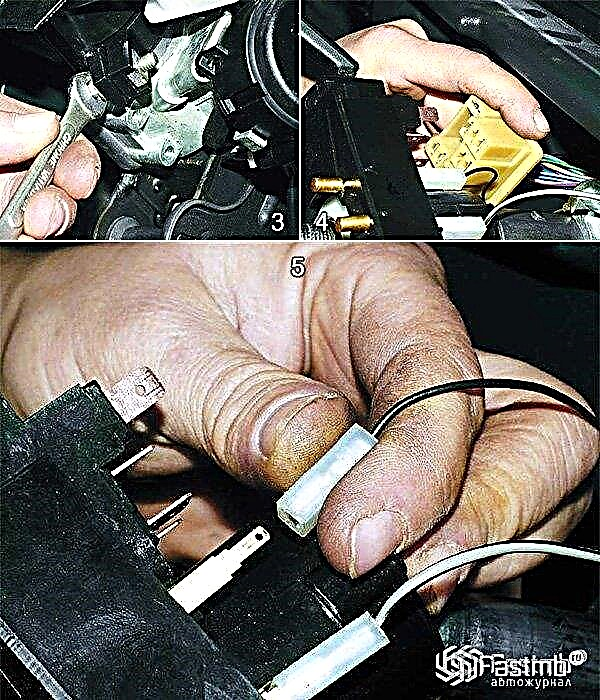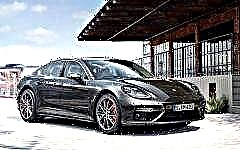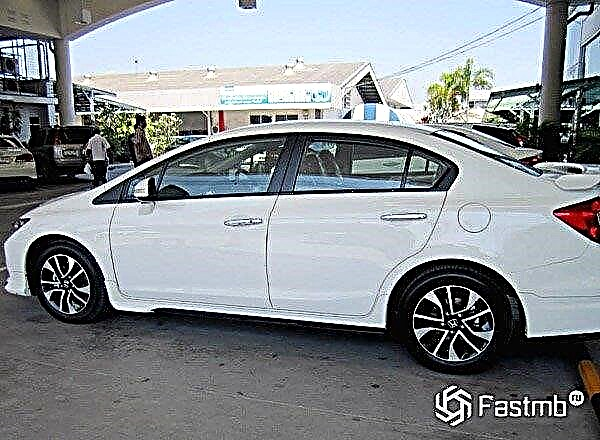

The content of the article:
- Actions in the event of an accident
- Filling in the protocol
- Who will help in the preparation of papers
- Pros and cons of Europrotocol
- What changes await us in the near future
- Forecasts and conclusions
Even minor car accidents stress the drivers and raise dozens of questions: "Should I call the police?" companies, more than 87% of car owners would not want to resort to the help of car inspectors in case of minor accidents, but are forced to do so, fearing to make mistakes, because of which the insurance company will refuse to pay.
The Europrotocol, which allows you to independently draw up a document on the accident, is a good solution in the conditions of large cities. While he was away, those who stood in kilometer-long traffic jams, waiting for the passage to be released, and those who got into an accident, looking out for the summoned representatives of the law for hours, also suffered.
What is a European protocol, what are the rules for its execution and what "pitfalls" can we expect? In simple terms, this is a document that records all the information about the accident. It is issued by the owners of vehicles involved in an accident, mainly for insurance companies, because liability before the law in the event of minor damage to equipment and the absence of corpses / seriously wounded is minimal.
Actions in the event of an accident

Having got into this kind of trouble, the participant of the accident must:
- check yourself for injuries;
- make sure of the well-being of satellites;
- place emergency signs;
- provide all possible assistance to the victims;
- talk to the other side;
- capture all aspects of the accident.
Only two participating vehicles (a car with a trailer is perceived as one whole), the adequacy of drivers (sober, physically and mentally healthy) and the absence of seriously injured people (including pedestrians) and / or municipal facilities are the necessary conditions for drawing up a European protocol. Otherwise, you need to call the "organs".
In a conversation with the second party, it is necessary to find out that you have no claims against each other, except for property, adequately (and without disagreements) assess the degree of guilt and damage, have valid insurance policies and other necessary documents and agree to disperse peacefully.
Capture everything that may be related to an accident: a general view of the accident from different sides (including from afar, preferably with road signs and traffic lights in the frame), braking distance (measure and photograph), paint chips, broken mirrors and other damaged parts, tire treads (so as not to be accused of driving on unsuitable for the season or worn tires), car owners and passengers (preferably full-length in order to avoid later possible claims about injuries) and other things that seem worthy of attention.
You can attach interviews with passers-by to the case. Take a large notebook and a few pens with you - so you can quickly distribute the sheets to others, asking them to write your full name, date, time and a few words about the incident. At least in the form of "blue Zhiguli were waiting at a traffic light, and a red Zaporozhets ran into them from behind."
The more materials you have on hand, the calmer you will feel. Remember that the equipment containing the accident record must be presented to the experts in kind, you cannot rewrite the data to another medium - this gives the insurers the right to challenge their authenticity. You will have to spend time and money on an independent examination, but it is not a fact that it will help.
Filling in the protocol

After you, together with your opponent, have come to the conclusion that the intervention of law enforcement officers is not required, and have done all of the above, clear the roadway and start writing the Europrotocol. The form of two connected sheets is issued by the insurer at the conclusion of the contract. The instruction is attached. After using up yours, stop by your insurance company's office and ask for a new one.
All data from the front side is automatically printed (self-copied) on the second copy, then the form is disconnected and the back side is filled in. Whose form goes into the case (the culprit or the victim) does not matter, but make sure that your vision of the event does not differ from your opponent (otherwise you will have to call the civil service). Specify in the appropriate columns:
- the place of the incident (in detail, up to the number of the neighboring house or kilometer on the highway);
- date and time;
- the number of road accident participants (no more than 2);
- “No” in the column about the dead and wounded (if there are any, the Euro-protocol cannot be drawn up);
- "No" in the paragraph on medical examination;
- "No" in the clause on damage to other vehicles;
- data of eyewitnesses with full name, address and telephone number;
- "No" in the paragraph on drawing up a protocol by the traffic police (even if they themselves are participants in the accident);
- information about both machines and their owners;
- information about the insurance company and the current OSAGO policy (or "Green Card" for foreign guests);
- indicate the place of the first blow with an arrow;
- a list of damages - visible and hidden, with an indication of the nature (crack, chip, dent, rupture);
- the alleged degree of guilt of both parties;
- details describing the moment of the accident;
- detailed diagram of the accident with the direction of movement of both vehicles, positions in the event of a collision and after it.
Have you filled it in? Check and sign both. You design the second page in splendid isolation, like your neighbor. Indicate:
- own vehicle ("A" or "B" - you designated it that way when filling out the first page of the protocol);
- circumstances of the incident with a brief description of the collision and the events preceding it (re-enter the date, time, address, etc.);
- data of the one who drove the car at the time of the accident;
- whether the car is able to move after the accident on its own.
Autograph and date complete the document. Write calmly, legibly, try to avoid mistakes and corrections of any kind, so as not to receive a refusal of damages based on them. Do not leave any column blank - fill in a dash or the letter "Z". Enter the description that does not fit into the main description in the "Appendix". The signatures of both parties must be on all important points.
Did you manage? Shake hands and go home. Do not forget to quickly send the document to the insurer's office (you have 5 working days). Prepare yourself mentally for inspections of the car by representatives of the insurance company or other experts. With the repair of the car, you will have to wait 15 calendar days or ask for permission from the insurer.
When the victim receives financial compensation, he will not be able to present any claims to the perpetrator in this incident, except to file a claim, stating that harm to health was imperceptible at the time of the accident and subsequently manifested itself. It is difficult to prove it, but some fans of nerves never give up the pleasure, so in case of an accident, exchange receipts for the absence of claims in the future.
Who will help in the preparation of papers

Many drivers are still afraid to draw up a European protocol on their own for fear of making a mistake, as a result of which the insurance company will refuse to pay. Driving schools began to teach self-registration of accidents, and those who did not undergo special training are offered the services of a hotline and contact centers.
Operators work around the clock and, in addition to paperwork, can help with finding parking lots and public transport stops, as well as advise where to send an appeal, complaint or proposal. Check with any car inspector or insurer for the latest service numbers in your region.
People can still exercise their civil rights and call the traffic police to the scene. At least in theory. In the absence of victims and the participation of no more than two cars, they are strongly advised to sort it out on their own, without resorting to the services of a traffic police.
Pros and cons of Europrotocol

On the one hand, innovations make life easier for drivers, eliminating the additional stress of communicating with not always loyal representatives of the law and reducing the time required to register an accident.
But, adding two plus two, we see that the traffic police simply took off the extra burden, because there are much fewer bloody accidents on the roads than ordinary collisions. The workload is reduced - the staff can also be reduced. There will be much fewer police patrols on the roads. A lot of their functions will be taken over by drivers and cameras of automatic traffic registration.
Let's touch on the financial side as well. Currently, European protocols give the right to compensation for losses only up to 50,000 rubles (in Moscow, St. Petersburg and adjacent areas - up to 400,000).
Insurers promise to consider the issue of increasing the size of payments, but for now they convince car owners that most accidents fit into 50 thousand and there is no need for a larger amount to fix a crack in the bumper and barely noticeable scratches.
Yes, this is a way out for a man on a shabby Lada. But sometimes even a trifling accident "flies in a pretty penny": one replacement of the deployed airbags can be more expensive, let alone damage to expensive parts of luxury cars. Anything that could not be covered by the insurance, the victims will recover from the culprit. Through the court or bandits.
What changes await us in the near future

Legislators, the Ministry of Finance and insurers continue to refine the rules and calculations as part of the registration of minor accidents under the European protocol. The plans for the near future contain three important innovations.
- This protocol will apply to accidents involving more than two cars.
- It will be possible to issue it, even if the drivers did not agree on determining the culprit of the accident and its circumstances.
- From July 1, 2018, the amount of payments in most regions of the Russian Federation should increase from 50 to 100 thousand rubles. But this provision will operate provided that vehicles have modern equipment and mobile applications, which, in a sense, should replace the traffic police by linking to the accident scene and informing the insurer about the accident in real time.
Forecasts and conclusions

Many Russians are worried that all of this could provoke chaos on the roads. Car owners are taught to be independent and honest, but there are a lot of people who want to get insurance "out of the blue" and deliberately create an emergency.
It is unlikely that such progressive innovations will appeal to respectable drivers. But the traffic police are delighted - the load on them has decreased significantly, which cannot but rejoice, especially taking into account some reduction in staff. They are most interested in promoting and developing a new practice, because with the growth of the country's car park, the number of "minor" road accidents in just one decade after the introduction of OSAGO has increased several times.
Despite everything, the popularity of the Europrotocol is growing. According to RSA, if before the introduction of amendments to the rules of the road (in particular, in the procedure for registering a road traffic accident) it was used monthly by about 12 thousand road traffic accident participants, then at present (as of late 2017 - early 2018) their number is grew to 38 thousand per month.
The share of accidents registered under the European protocol in Moscow until July 2017 was about 6%, and already in October it exceeded 21%. At the moment, in some regions of the Russian Federation, the figure reaches 46-55%, and by mid-2018, according to forecasts, it should reach 62-68%.











